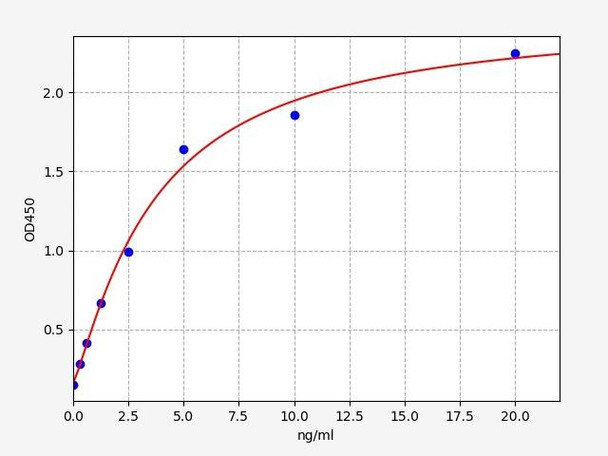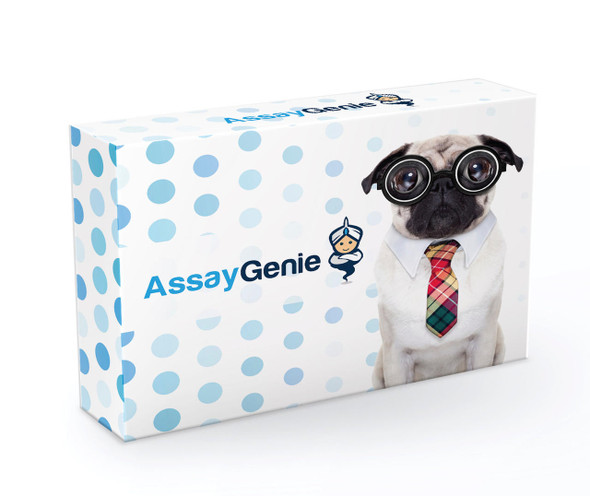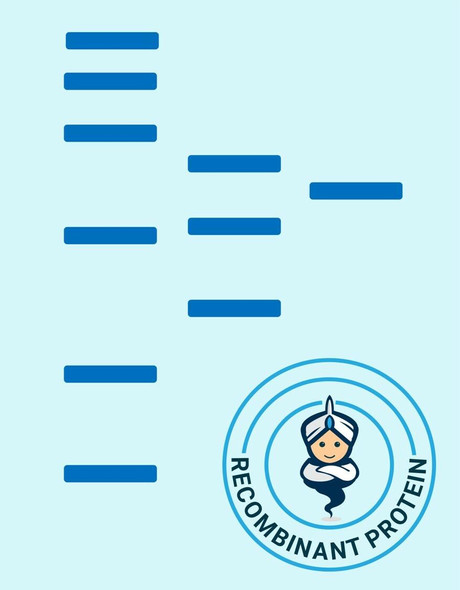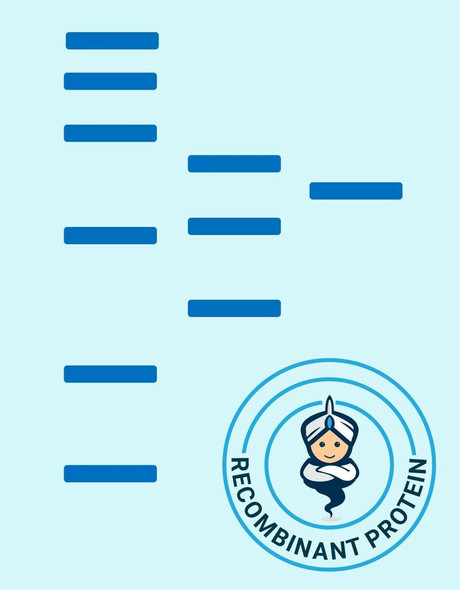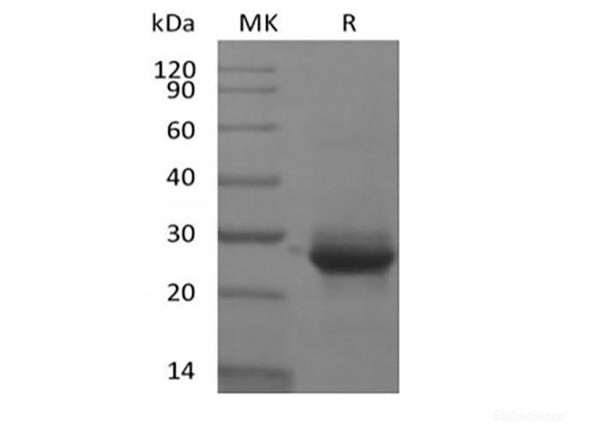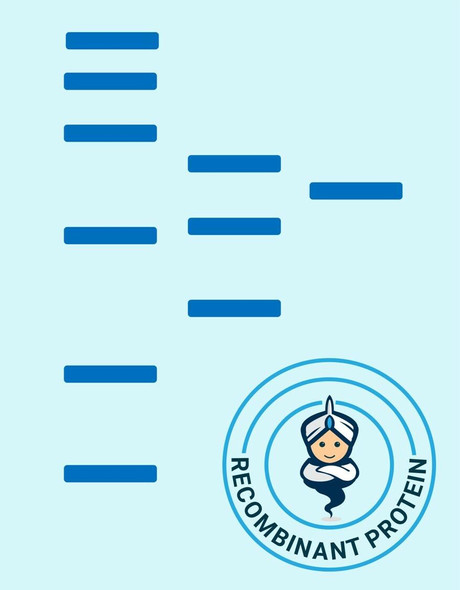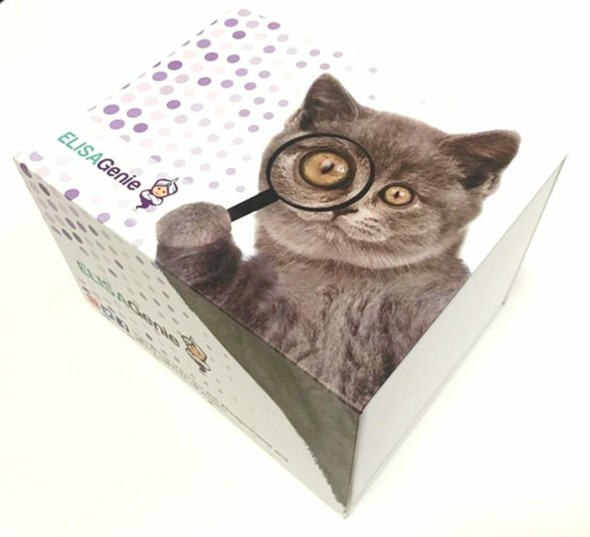Human KRAS (GTPase KRas) ELISA Kit (HUFI03662)
- SKU:
- HUFI03662
- Product Type:
- ELISA Kit
- Size:
- 96 Assays
- Uniprot:
- P01116
- Sensitivity:
- 0.188ng/ml
- Range:
- 0.313-20ng/ml
- ELISA Type:
- Sandwich
- Synonyms:
- C K RAS, c Ki ras, GTPase KRas, K Ras 2, K RAS2A, K RAS2B, K RAS4A, K RAS4B, KI RAS, KRAS, KRAS1, KRAS2, KRAS2B speicifc, Krasa, Krasb, NS3, RASK2
- Reactivity:
- Human
Description
Human KRAS (GTPase KRas) ELISA Kit
The Human KRAS GTPase ELISA Kit is specifically designed for the precise quantification of KRAS (Kirsten rat sarcoma viral oncogene homolog) levels in human samples including serum, plasma, and cell culture supernatants. This kit offers exceptional sensitivity and selectivity, ensuring accurate and consistent results for a variety of research purposes.KRAS is a critical GTPase protein that plays a key role in cell signaling pathways, cell growth, and proliferation.
Mutations in the KRAS gene are commonly associated with various cancers, making it a valuable biomarker for cancer research and drug development.With its advanced technology and reliable performance, the Human KRAS GTPase ELISA Kit is a valuable tool for studying KRAS-related diseases and developing potential therapeutic strategies.
| Product Name: | Human KRAS (GTPase KRas) ELISA Kit |
| Product Code: | HUFI03662 |
| Size: | 96 Assays |
| Alias: | C K RAS ELISA Kit, c Ki ras ELISA Kit, GTPase KRas ELISA Kit, K Ras 2 ELISA Kit, K RAS2A ELISA Kit, K RAS2B ELISA Kit, K RAS4A ELISA Kit, K RAS4B ELISA Kit, KI RAS ELISA Kit, KRAS ELISA Kit, KRAS1 ELISA Kit, KRAS2 ELISA Kit, KRAS2B speicifc ELISA Kit, Krasa ELISA Kit, Krasb ELISA Kit, NS3 ELISA Kit, RASK2 ELISA Kit |
| Detection method: | Sandwich ELISA, Double Antibody |
| Application: | This immunoassay kit allows for the in vitro quantitative determination of Human KRAS (GTPase KRas) concentrations in serum plasma and other biological fluids. |
| Sensitivity: | < 0.188ng/ml |
| Range: | 0.313-20ng/ml |
| Storage: | 4°C for 6 months |
| Note: | For Research Use Only |
| Recovery: | Matrices listed below were spiked with certain level of Human KRAS (GTPase KRas) and the recovery rates were calculated by comparing the measured value to the expected amount of Human KRAS (GTPase KRas) in samples. | ||||||||||||||||
| |||||||||||||||||
| Linearity: | The linearity of the kit was assayed by testing samples spiked with appropriate concentration of Human KRAS (GTPase KRas) and their serial dilutions. The results were demonstrated by the percentage of calculated concentration to the expected. | ||||||||||||||||
| |||||||||||||||||
| CV(%): | Intra-Assay: CV<8% Inter-Assay: CV<10% |
| Component | Quantity | Storage |
| ELISA Microplate (Dismountable) | 8×12 strips | 4°C for 6 months |
| Lyophilized Standard | 2 | 4°C/-20°C |
| Sample/Standard Dilution Buffer | 20ml | 4°C |
| Biotin-labeled Antibody(Concentrated) | 120ul | 4°C (Protect from light) |
| Antibody Dilution Buffer | 10ml | 4°C |
| HRP-Streptavidin Conjugate(SABC) | 120ul | 4°C (Protect from light) |
| SABC Dilution Buffer | 10ml | 4°C |
| TMB Substrate | 10ml | 4°C (Protect from light) |
| Stop Solution | 10ml | 4°C |
| Wash Buffer(25X) | 30ml | 4°C |
| Plate Sealer | 5 | - |
Other materials and equipment required:
- Microplate reader with 450 nm wavelength filter
- Multichannel Pipette, Pipette, microcentrifuge tubes and disposable pipette tips
- Incubator
- Deionized or distilled water
- Absorbent paper
- Buffer resevoir
| UniProt Protein Function: | KRas: Ras proteins bind GDP/GTP and possess intrinsic GTPase activity. Interacts with PHLPP. Interacts (active GTP-bound form preferentially) with RGS14. Alternate between an inactive form bound to GDP and an active form bound to GTP. Activated by a guanine nucleotide-exchange factor (GEF) and inactivated by a GTPase- activating protein (GAP). Belongs to the small GTPase superfamily. Ras family. 2 isoforms of the human protein are produced by alternative splicing. |
| UniProt Protein Details: | Protein type:Oncoprotein; G protein; G protein, monomeric; G protein, monomeric, Ras; Motility/polarity/chemotaxis Chromosomal Location of Human Ortholog: 12p12.1 Cellular Component: extrinsic to internal side of plasma membrane; focal adhesion; mitochondrion; membrane; cytoplasm; plasma membrane; cytosol; lipid raft Molecular Function:protein binding; GDP binding; GTP binding; GMP binding; protein complex binding; LRR domain binding Biological Process: regulation of long-term neuronal synaptic plasticity; axon guidance; nerve growth factor receptor signaling pathway; activation of MAPKK activity; response to glucocorticoid stimulus; activation of NF-kappaB transcription factor; positive regulation of MAP kinase activity; small GTPase mediated signal transduction; positive regulation of cell proliferation; visual learning; negative regulation of neuron apoptosis; epidermal growth factor receptor signaling pathway; fibroblast growth factor receptor signaling pathway; cytokine and chemokine mediated signaling pathway; positive regulation of nitric-oxide synthase activity; MAPKKK cascade; social behavior; response to mineralocorticoid stimulus; regulation of synaptic transmission, GABAergic; positive regulation of Rac protein signal transduction; negative regulation of cell differentiation; Ras protein signal transduction; insulin receptor signaling pathway; innate immune response; striated muscle cell differentiation; positive regulation of protein amino acid phosphorylation; actin cytoskeleton organization and biogenesis; blood coagulation; vascular endothelial growth factor receptor signaling pathway; leukocyte migration Disease: Bladder Cancer; Gastric Cancer, Hereditary Diffuse; Pancreatic Cancer; Noonan Syndrome 3; Leukemia, Acute Myeloid; Lung Cancer; Breast Cancer; Schimmelpenning-feuerstein-mims Syndrome; Cardiofaciocutaneous Syndrome 2 |
| NCBI Summary: | This gene, a Kirsten ras oncogene homolog from the mammalian ras gene family, encodes a protein that is a member of the small GTPase superfamily. A single amino acid substitution is responsible for an activating mutation. The transforming protein that results is implicated in various malignancies, including lung adenocarcinoma, mucinous adenoma, ductal carcinoma of the pancreas and colorectal carcinoma. Alternative splicing leads to variants encoding two isoforms that differ in the C-terminal region. [provided by RefSeq, Jul 2008] |
| UniProt Code: | P01116 |
| NCBI GenInfo Identifier: | 131875 |
| NCBI Gene ID: | 3845 |
| NCBI Accession: | P01116.1 |
| UniProt Related Accession: | P01116 |
| Molecular Weight: | |
| NCBI Full Name: | GTPase KRas |
| NCBI Synonym Full Names: | KRAS proto-oncogene, GTPase |
| NCBI Official Symbol: | KRAS |
| NCBI Official Synonym Symbols: | NS; NS3; CFC2; RALD; K-Ras; KRAS1; KRAS2; RASK2; KI-RAS; C-K-RAS; K-RAS2A; K-RAS2B; K-RAS4A; K-RAS4B; c-Ki-ras2 |
| NCBI Protein Information: | GTPase KRas |
| UniProt Protein Name: | GTPase KRas |
| UniProt Synonym Protein Names: | K-Ras 2; Ki-Ras; c-K-ras; c-Ki-rasGTPase KRas, N-terminally processed |
| Protein Family: | GTPase |
| UniProt Gene Name: | KRAS |
| UniProt Entry Name: | RASK_HUMAN |
*Note: Protocols are specific to each batch/lot. For the correct instructions please follow the protocol included in your kit.
Before adding to wells, equilibrate the SABC working solution and TMB substrate for at least 30 min at 37 °C. When diluting samples and reagents, they must be mixed completely and evenly. It is recommended to plot a standard curve for each test.
| Step | Protocol |
| 1. | Set standard, test sample and control (zero) wells on the pre-coated plate respectively, and then, record their positions. It is recommended to measure each standard and sample in duplicate. Wash plate 2 times before adding standard, sample and control (zero) wells! |
| 2. | Aliquot 0.1ml standard solutions into the standard wells. |
| 3. | Add 0.1 ml of Sample / Standard dilution buffer into the control (zero) well. |
| 4. | Add 0.1 ml of properly diluted sample ( Human serum, plasma, tissue homogenates and other biological fluids.) into test sample wells. |
| 5. | Seal the plate with a cover and incubate at 37 °C for 90 min. |
| 6. | Remove the cover and discard the plate content, clap the plate on the absorbent filter papers or other absorbent material. Do NOT let the wells completely dry at any time. Wash plate X2. |
| 7. | Add 0.1 ml of Biotin- detection antibody working solution into the above wells (standard, test sample & zero wells). Add the solution at the bottom of each well without touching the side wall. |
| 8. | Seal the plate with a cover and incubate at 37 °C for 60 min. |
| 9. | Remove the cover, and wash plate 3 times with Wash buffer. Let wash buffer rest in wells for 1 min between each wash. |
| 10. | Add 0.1 ml of SABC working solution into each well, cover the plate and incubate at 37 °C for 30 min. |
| 11. | Remove the cover and wash plate 5 times with Wash buffer, and each time let the wash buffer stay in the wells for 1-2 min. |
| 12. | Add 90 µL of TMB substrate into each well, cover the plate and incubate at 37 °C in dark within 10-20 min. (Note: This incubation time is for reference use only, the optimal time should be determined by end user.) And the shades of blue can be seen in the first 3-4 wells (with most concentrated standard solutions), the other wells show no obvious color. |
| 13. | Add 50 µL of Stop solution into each well and mix thoroughly. The color changes into yellow immediately. |
| 14. | Read the O.D. absorbance at 450 nm in a microplate reader immediately after adding the stop solution. |
When carrying out an ELISA assay it is important to prepare your samples in order to achieve the best possible results. Below we have a list of procedures for the preparation of samples for different sample types.
| Sample Type | Protocol |
| Serum | If using serum separator tubes, allow samples to clot for 30 minutes at room temperature. Centrifuge for 10 minutes at 1,000x g. Collect the serum fraction and assay promptly or aliquot and store the samples at -80°C. Avoid multiple freeze-thaw cycles. If serum separator tubes are not being used, allow samples to clot overnight at 2-8°C. Centrifuge for 10 minutes at 1,000x g. Remove serum and assay promptly or aliquot and store the samples at -80°C. Avoid multiple freeze-thaw cycles. |
| Plasma | Collect plasma using EDTA or heparin as an anticoagulant. Centrifuge samples at 4°C for 15 mins at 1000 × g within 30 mins of collection. Collect the plasma fraction and assay promptly or aliquot and store the samples at -80°C. Avoid multiple freeze-thaw cycles. Note: Over haemolysed samples are not suitable for use with this kit. |
| Urine & Cerebrospinal Fluid | Collect the urine (mid-stream) in a sterile container, centrifuge for 20 mins at 2000-3000 rpm. Remove supernatant and assay immediately. If any precipitation is detected, repeat the centrifugation step. A similar protocol can be used for cerebrospinal fluid. |
| Cell culture supernatant | Collect the cell culture media by pipette, followed by centrifugation at 4°C for 20 mins at 1500 rpm. Collect the clear supernatant and assay immediately. |
| Cell lysates | Solubilize cells in lysis buffer and allow to sit on ice for 30 minutes. Centrifuge tubes at 14,000 x g for 5 minutes to remove insoluble material. Aliquot the supernatant into a new tube and discard the remaining whole cell extract. Quantify total protein concentration using a total protein assay. Assay immediately or aliquot and store at ≤ -20 °C. |
| Tissue homogenates | The preparation of tissue homogenates will vary depending upon tissue type. Rinse tissue with 1X PBS to remove excess blood & homogenize in 20ml of 1X PBS (including protease inhibitors) and store overnight at ≤ -20°C. Two freeze-thaw cycles are required to break the cell membranes. To further disrupt the cell membranes you can sonicate the samples. Centrifuge homogenates for 5 mins at 5000xg. Remove the supernatant and assay immediately or aliquot and store at -20°C or -80°C. |
| Tissue lysates | Rinse tissue with PBS, cut into 1-2 mm pieces, and homogenize with a tissue homogenizer in PBS. Add an equal volume of RIPA buffer containing protease inhibitors and lyse tissues at room temperature for 30 minutes with gentle agitation. Centrifuge to remove debris. Quantify total protein concentration using a total protein assay. Assay immediately or aliquot and store at ≤ -20 °C. |
| Breast Milk | Collect milk samples and centrifuge at 10,000 x g for 60 min at 4°C. Aliquot the supernatant and assay. For long term use, store samples at -80°C. Minimize freeze/thaw cycles. |

